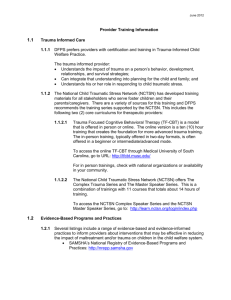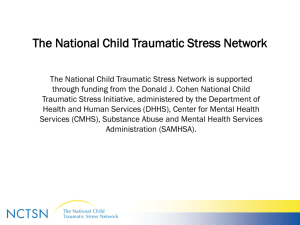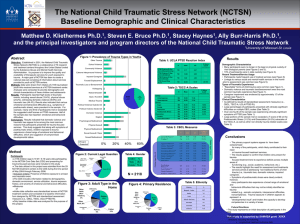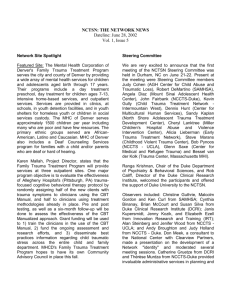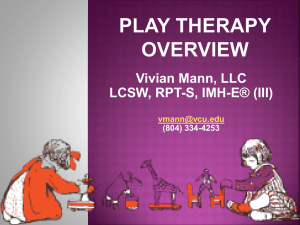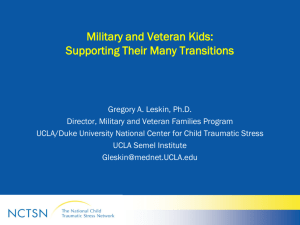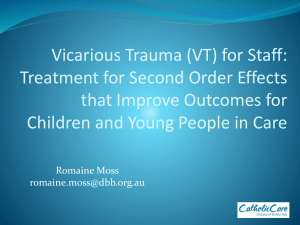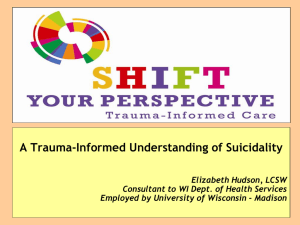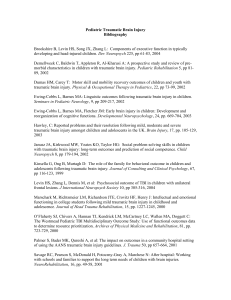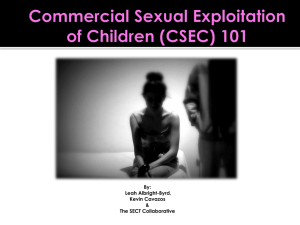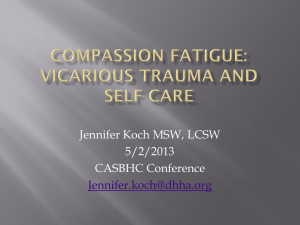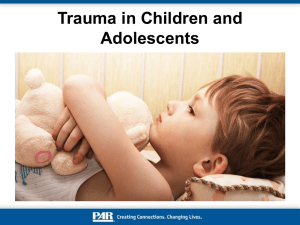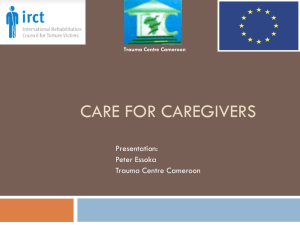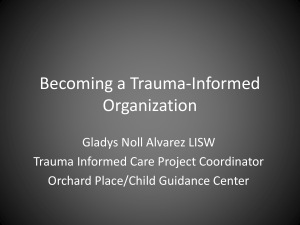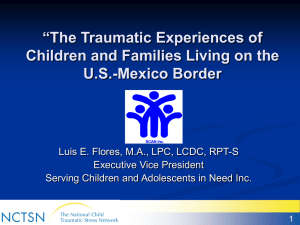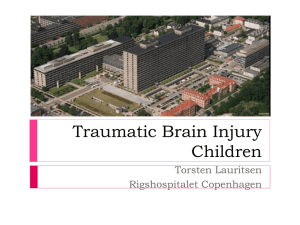Ellen Gerrity - Mental Health America
advertisement
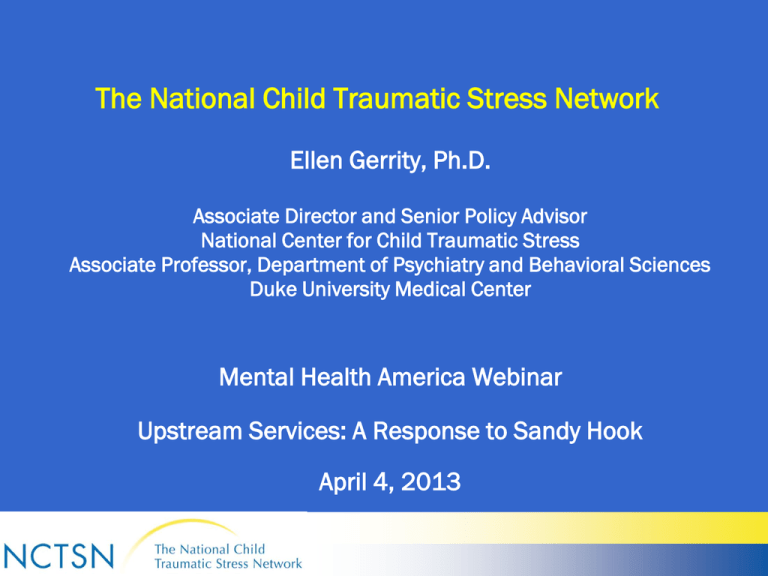
The National Child Traumatic Stress Network Ellen Gerrity, Ph.D. Associate Director and Senior Policy Advisor National Center for Child Traumatic Stress Associate Professor, Department of Psychiatry and Behavioral Sciences Duke University Medical Center Mental Health America Webinar Upstream Services: A Response to Sandy Hook April 4, 2013 Child Traumatic Stress as a Public Health Problem Two of every three children will witness or experience a traumatic event before the age of 16 (Copeland et al., 2007). One in five children experience some form of child maltreatment (Finkelhor et al., 2009) 3.3 million children reported to child protective services in 2008 (CDC, 2010). What is traumatic stress? • Exposure to events that involve threats of injury, death, or danger where intense terror, anxiety, and helplessness is experienced • Can occur via direct experience or witnessing event, or hearing about an event • Reactions vary with age, but even very young children experience intense reactions Variety of Traumatic Events • Trauma may be embedded in daily life, may be chronic or acute event: – Child abuse and maltreatment – Domestic violence – Community violence and criminal victimization – Sexual assault – Medical trauma – Traumatic loss and bereavement – Accidents/fires – Natural disasters – War/Terrorism/Political Violence Common Symptoms of Traumatic Stress • • • • • • • • Children may suffer severe emotional and developmental consequences from exposure to trauma and violence including: Sleep problems, including nightmares Intrusive thoughts or flashbacks Numbing of emotions Avoidance of reminders of trauma Anger and irritability Poor concentration Depressive symptoms Anxiety and behavior problems Long-Term Consequences of Trauma Exposure During Childhood Without Effective Treatment: • Serious adult psychiatric difficulties, including depression, anxiety disorders, and suicidal behaviors • Overutilization of medical services • ACES study - 4 or more childhood traumas may result in risk behaviors, health consequences, shortened lifespan Adverse Childhood Experiences Study (ACES)* Felitti et al. 1998 National Child Traumatic Stress Network (NCTSN) The mission of the National Child Traumatic Stress Network (NCTSN) is to raise the standard of care and improve access to services for traumatized children, their families and communities throughout the United States. National Child Traumatic Stress Network • Funded in 2000 (Children’s Health Act) • Rapid Change (9/11/Increased Growth/Cutbacks) • Innovative Collaborative Network Structure: •UCLA-Duke University National Center for Child Traumatic Stress (Category I) •22 Intervention Development and Evaluation Centers (Category II) •56 Community Treatment and Service Centers (Category III) •90 Affiliate (formerly funded) members NCTSN Scope • Trauma mission includes all trauma types, all service systems, all professional disciplines, all ages, and a strong cultural and family perspective throughout activities. • Includes a wide range of traumatic experiences, including physical and sexual abuse; domestic, school, and community violence; natural disasters, terrorism, or military family challenges; and life-threatening injury and illness. NCTSN Activities • Range of activities including: intervention development and adaptation; training in many forms (Learning Collaborative systems change, in-person, web-based); product development; public awareness; evaluation and data analysis; policy work; and service delivery • Far-reaching family and consumer program at all levels of the program • Embedded cultural competence and translations work throughout the development of products and training approaches • Strong collaborative model How is NCTSN making a difference? • Over 350,000 children served through direct contact; improvements after treatment and services • Hundreds of thousands of professionals trained • Over 40 evidence-based treatments and promising practices developed • Over 200 products for parents/caregivers, youth, professionals, general public, policymakers, media • Network response to national crises, including Sandy Hook Accountability: NCTSN Core Data Set on >14,000 Children • Diverse group of children with complex histories and problems: 77 % reporting exposure to more than one trauma type • Developmental issues are important to trauma and recovery • Notable functional impairments and clinical diagnoses (PTSD, depression, anxiety, academic problems) • Like ACES, # of traumas are associated with serious outcomes • High rates of service utilization (child welfare, special education, mental health) prior to entering treatment - opportunities for early intervention • Effectiveness of the NCTSN: Children’s problems improve with treatment “You don’t shoot at children.” NCTSN Sandy Hook Community Support • • • • • • • • • • Network mobilization Death notification Crisis Center staffing/Crisis Hotline training Governor’s Commission/School District support Sandy Hook students and teachers/Other schools Trauma Resources (posted at http://www.nctsn.org/traumatypes/terrorism), including Psychological First Aid for Schools Federal and State policymaker support Healthcare community coordination and training Preparedness/Evidence-based practices Long term planning For more information about the NCTSN and what was presented today: Ellen Gerrity, PhD 301-379-2145 ellen.gerrity@duke.edu www.nctsn.org
